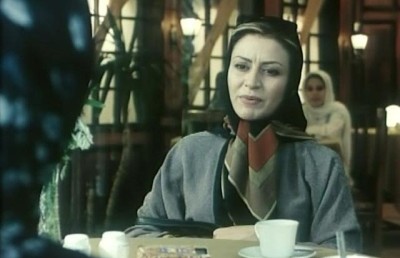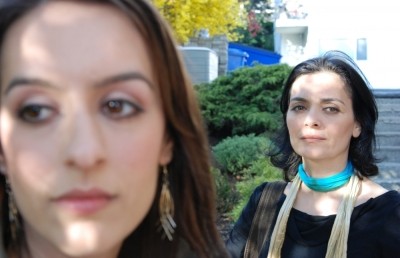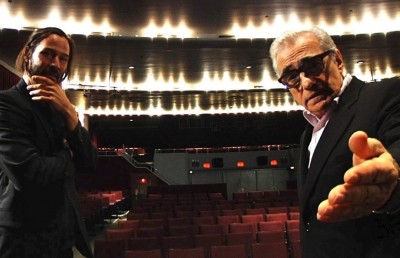Elegies for the vagrant souls: Reading Reza Allamezadeh’s films of exile
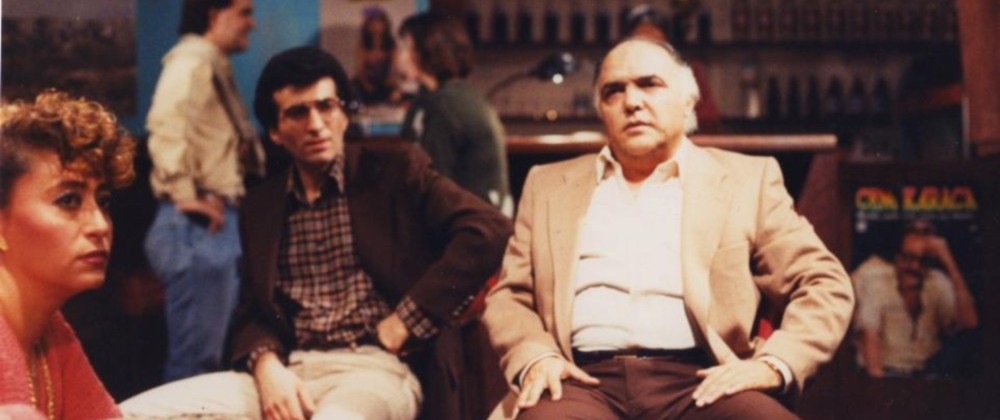
Using the dichotomy of exilic/diasporic filmmaker provided by Hamid Naficy in his book An accented cinema [1], the Iranian filmmaker Reza Allamezadeh fittingly falls into the first rubric, the exilic filmmaker. As a filmmaker with obvious political tendencies, Reza Allamezadeh spent several years in jail under Shah’s regime, due to his alleged involvement with a plan for taking the crown prince hostage during the Children International Film Festival in Tehran. The fall of the royal regime returned him behind the camera [2], but his filmmaking activity was short-lived. As the maker of documentaries with obvious leftist tendencies who made no attempt in hiding his ties with one of the major leftist political groups of Iran, he had to abandon shooting his last movie and leave the country clandestinely after being summoned to the revolutionary court, as the Khomeini regime crackdown on its the dissidents was reaching its zenith. His first destination was the neighbour country, Turkey, where many refugees fled. Their intention was to stay there temporarily, and then try to find a way to enter a western country, an expectation that many times didn’t meet with success (Laver 29). Allamezadeh eventually managed to leave Turkey for the Netherlands, which has been his host country since. However this experience made a deep impression on him and drove him to portray it in his only feature film in exile, The Guests of Hotel Astoria (Reza Allamezadeh, 1989).
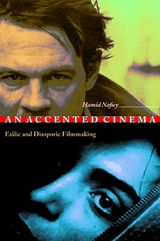
Allamezadeh’s exilic career consists of a number of films; the majority of them belong to the domain of documentary. Despite this, I will exclusively concentrate on his two fiction movies, the short film A Few Simple Sentences (Reza Allamezadeh, 1985) and the following feature, The Guests of Hotel Astoria (Reza Allamezadeh, 1989). The filmmaking career of Allamezadeh in exile provides a good case in point for the difficulties that refugee filmmakers have to face. According to Grassilli: “If the filmmaker is a refugee, he/she is however, cut off from access to the home country, including possible film making resources related to the country of origin. If no provisions are made for cultural diversity in the new country of residence for minority and accentuated films, and the film there does not fit with the requirements of ‘nationality’ of public bodies, the chances for a film to be made are once again strongly reduced. The result is the rarity of films made by refugees, or the long delay that refugee film-makers have to endure in pursuing their film project to complete production” (Grassilli 1244).
The fact that the movies of my study have been made in the 1980s and that Allamezadeh has not managed to make any other fiction films since then gives testimony to the above point. Despite his slender fiction film output, his movies provide us with a chance to examine the development of what Naficy refers to as accent within the movies made by exilic directors. Aside from locating the origins of accent, I will attempt to describe the pertinence of Vivien Sobchack’s ideas about the alienation of the body and “epidermalizing gaze” to these exilic movies. Moreover I will survey the presentation of space in these two titles, as well as the politics of gender and the variety of journey routes in The Guests of Hotel Astoria.
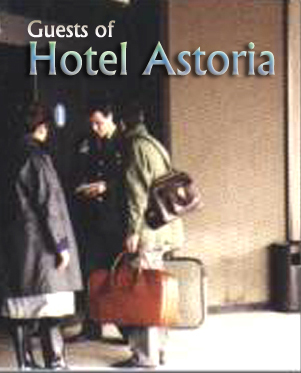
Given the fact that both films have been out of the film festival circuit for about two decades, I will spend a few lines delineating their respective plots. The story of A Few Simple Sentences is structured upon the unfortunate experience of a refugee boy whose noble intentions for saving a wounded pigeon are misinterpreted by a group of Dutch bus passengers. Set across a much broader span of space, The Guests of Hotel Astoria follows the story of an Iranian couple among other residents of a cheap hotel in Turkey who all have fled their home country to seek refuge in a western country. The couple’s initial plan to move to the Netherlands –where the man’s brother lives– fails as their visa application is rejected. In the meantime, Poori –the woman– gets involved in an amorous relationship with Mohseni, another resident of the hotel who, unbeknownst to her, is a leftist activist. Following the advice of Mohseni’s friend, Poori and her husband obtain a visa for Cuba, which allows them to enter the Netherlands as the transit point. But the Dutch officials, suspicious about their connection with the leftist groups, reject their plea for asylum and return them back to Turkey. Things get more complicated when the Turkish police who have already arrested Mohseni learn of his intimate relation with Poori. Poori gets herself and her husband Karimnia released by complying with the accusation of the indecent proposal of giving pleasure to the Turkish police officer. As the probable result of her one night stand with Mohseni, Poori discovers she is pregnant. She is then fooled by a word of mouth that leads her to believe that giving birth to a child in the United States entitles the mother to apply for residency. She goes to the United States to deliver her child, but then realizes the falsity of the information. Crestfallen, she eventually loses her life during the delivery. Her child however paves the way for Karimnia’s entry into the States, even though he is unaware of his wife’s death.
To begin with, both movies feature some aesthetic characteristics of the accented cinema, a definition Naficy believes every exilic movie can fit into. When it comes to the notion of accent, I will refer to Naficy’s idea about the application of this term in cinema. He describes the dominant mode of filmmaking as accent-free, against which he raises the notion of accented films. Then he explains the affinity of the diasporic and exilic movies with the accented mode of filmmaking: “The cinema discussed here derives its accent from its artisanal and collective production modes and from the filmmakers’ and audience’s deterritorialized locations” (Naficy, An Accented Cinema, 23). The accent however is manifested in two different ways in these movies. In order to delineate this difference in approach I will resort to Naficy’s categorization of the films made by Iranian filmmakers in exile. In this categorization, he puts The Guests of Hotel Astoria under the third category for which he coins the term “cinema of transitions.” According to him, these movies pivot on “…Iranians who are in transit in a third space, where they attempt to obtain passports, visas and plane tickets” (Naficy, An Accented Cinema 77). Given the typical route of Iranian refugees through Turkey, this category is imbued with some level of ethnic specificity. I will argue that Allamezadeh’s feature also carries the elements of the second category branded as “cinema of panic and pursuit” which is marked by both spatial and temporal claustrophobia and the presence of a political theme that informs the actions and creates a sense of panic (Naficy, An Accented Cinema 77).
Although such a politically charged fear is not the initial problem for the heroine of the film, Poori, she does get involved with it along the way. It is worth noting that unlike the examples Naficy utilizes to define this second category, in The Guests of hotel Astoria, the terror originates not merely from the refugees’ country of origin but also from the place they lead their life of liminality. Allamezadeh’s movie demonstrates the ill-defined boundary between the discussed categories. Naficy believes that movies belonging to both rubrics of “panic” and “transition” tend to follow a classical narrative structure and therefore are not very innovative in terms of style. He also believes that because of the casting of Iranian actors and the use of Farsi as the main diegetic language, the film addresses a narrower Iranian audience, (An Accented Cinema 80). Of course this idea that The Guests of Hotel Astoria is targeted or limited to an Iranian audience can be subject to further debate, but the prominence of Farsi among other spoken languages clearly differentiates it from A Few Simple Sentences. This latter title carries more signs from the category Naficy dubs as “liminal cinema” (liminal being something that defies easy categorisation into one category or type). We can sense the broader appeal of movies in this category, for based on his definition they are not overly concerned with the ethnic background of the hero. These movies, citing from Naficy, concentrate on exhibiting “..the life and clash of clusters in exile” (An Accented Cinema 76). A Few Simple Sentences conforms to this model inasmuch as the bitter experience of the child stems from his situation as a stranger who could virtually come from any country in the Middle East. His nationality is brought up briefly in the bus scene, but does not play a crucial role in the plot; this more resembles the signature of a director interested in adding a personal touch to the story by pointing to his origins.
Taking all these into account, we can see that the accent in The Guests of Hotel Astoria is created through the ethnic flavour of the story, which in turn had its influence not only on the production process of the film, but on its overall style. According to the director [3], he had to shoot the majority of scenes in the US, as his story necessitated the presence of Iranian actors, many of whom were living in the States around that time. However the majority of them were unable to leave the States, for their residency status had yet to be settled (We can observe the analogy between their real status with those of the characters they incarnate).
While the director got the inspiration for writing the script from a real account he had heard from a friend in the Netherlands –he was told about a lady coming to the Netherlands with the hope that giving birth to her child there would guarantee her own future residency– he had to change the final destination of Poori to the US in order to use the cast he had assembled. For the same reason he also had to shoot the interior hotel scenes in a set he built in the States which saved him from the impossible task of taking his cast to either Turkey or the Netherlands. The limitations Allamezadeh had to tackle confirms Naficy’s idea of making accented film in interstices of the industry (Naficy, An Accented Cinema 46). The production of his feature at some points not only entailed recourse to modes of guerilla filmmaking, but also became possible through co-operation between artists of different nationalities (which may seem contradictory to the primarily ethnic address of the film). Allamezadeh recounts how for shooting the scenes of at the Istanbul airport (as well as the teahouse) he had to enter the scene under the guise of an extra, because he didn’t have the permission to shoot in Turkey. To accomplish this, he was assisted by a Turkish director who added the airport scene to his own script to justify the presence of a crew –including Allamezadeh–shooting there. This film also represents another example of the international fraternity between marginal artists through the presence of Charles Burnett, a “minority filmmaker” according to Naficy (An Accented Cinema 19), as the director of photography.
In contrast to The Guests of Hotel Astoria, which resists being defined by a specific geographical area, A Few Simple Sentences demonstrates a sense of belonging to a place; in fact it can be put under the rubric of both accented cinema and the national cinema of the country it was shot in (the Netherlands). This sense of belonging to a certain geographical area could be partly a result of Allamezadeh’s collaboration with full Dutch cast and crew (barring the main actor and the composer). However the fact that the story is set around the dialectics of integration –struggle and resistance– plays a crucial part. The film nevertheless contradicts Naficy’s idea about the multilinguality of “liminal cinema” by employing only the Dutch language, whereas in The Guests of Hotel Astoria dialogue is delivered in English, Farsi and Turkish.
To countervail the belief that the use of multiple languages might increase the potential audience by addressing different communities, Allamezadeh’s short film ironically reaches a greater number of spectators —not through the diversity of language but by raising an issue that can be easily comprehended by the spectators of any given community. In fact he takes the verbal communication at the heart of his movie and problematizes the issue of language. In the final scene we witness how the images overpower the words and over take them to complete the child’s story, and so in effect underscore the inefficiency of language and justify the boy’s silence. Notwithstanding its superficial similarities with a Dutch product, A Few Simple Sentences still carries the quality of accented cinema. Accent in its conventional definition is produced through the collision of two languages, as a foreign-accented speaker endeavours to speak in a new language, while his speech is still influenced by the intonation and pronunciation of his mother tongue. In a similar manner, A Few Simple Sentences carries strong links with the origins of its filmmaker’s activities. In fact, its production to a great extent is beholden to Allamezadeh’s background.
Allamezadeh started his filmmaking career by making films for children in the 1970s. At least two of his “children movies” were produced by the Institute for the Intellectual Development of Children and Young Adults (Kanoon-e Parvareshe Fekri-e Koodakan Va Nojavanan), a highly reputed centre for producing cultural products for children and young adults under both royal and Islamic regimes. As a governmental organization, it was inaugurated in 1969 in order to produce books and films for a young audience, and experienced a “rapid and steady growth” to become one of the “major producers of film for children” (Sadr 229). Working there sounded appealing to the filmmakers affiliated with the New Wave of Iranian cinema, as its products, to borrow Hamid Reza Sadr’s words, “depart quite radically from the conventions and production values of the studio system of 1960s and 1970s” (229). Allamezadeh earned his reputation through one of his movies for Kanoon, Daar (Reza Allamezadeh, 1973), which was circulated in various festivals, including Gijon film festival where it was awarded a prize. More than ten years later, it was exactly in the same venue that Allamezdeh met the Dutch producers of his first movie in exile. Learning about his background, the Dutch producers invited him to furnish them with a subject, and Allemezadeh’s contribution was A Few Simple Sentences, the idea of which was conceived through linking two separate images he witnessed in two different places; a boy boarding a bus in Turkey with a pigeon hidden under his jacket, and a pigeon that freed itself from a dog’s mouth in Spain. But the influence of the past is not limited to the story behind the production. The story and structure of the film strikes a powerful resemblance to the traditions of filmmaking in Kanoon. Sadr mentions the common stylistic features of movies made in Kanoon as such: “..more naturalistic photography, closer to documentary than to studio made fiction film…location shooting and the use of available light” (229). It takes little effort to notice that many of these features are applicable to A Few Simple Sentence.
I should add that the films which brought Iranian cinema back to the international spotlight in the 1980s also had their roots in this tradition– in fact two of the most famous early cases, The Runner (Amir Naderi, 1985) and Where is the friend’s home? (Abbas Kiarostami, 1986) were both products of Kanoon. In his writing –which basically revolves around the Iranian movies after the revolution– Sadr describes how the small heroes of these films are at the service of the moral message: “children eased the problem of judgment –which won’t politicize the medium– by projecting it on to the realms of personal experience and feeling” (236). This personal and non-political approach is shared by Allamezadeh’s film –Khomeini’s name is only mentioned in passing– which at the same time gives endorsement to Naficy’s idea of the “toning down of films’ political rhetorics” (An Accented Cinema 280) in movies belonging to the “liminal cinema.”
For A Few Simple Sentences the idea of accent emerges similarily. Allamezadeh’s short film also follows the model of Kanoon’s pre-revolution children movies in its use of symbolic language. Masoud Mehrabi in his History of Iranian Cinema hints to rumours that circulated around the intentions of the royal regime within the centre. According to him some people believed that the ultimate intention was to persuade the dissident intellectual artists to get involved with purely cultural –and so non-political– activities (352). Even if it was the case, the output of filmmakers proved this policy didn’t always go according to plans, since some filmmakers took the opportunity to convey their opposing voices by undercutting the seemingly harmless images of children movies sponsored by the government itself! As Mehrabi quotes from Zarrinkelk, one of the major animators of Kanoon, “ in some cases under the guise of children movies, messages were thrown at the grown-ups” (356). Deploying an array of symbols made this secondary level of address possible; for example, a number of Kanoon movies before the revolution were constructed around a relation between a child and an animal –which in some cases took up a symbolic role. Despite the fact that A Few Simple Sentences was made in a free society, Allemzadeh used the same symbolic trope to accentuate the situation of his hero. In some respect, the hurt pigeon and its desperate flight in the bus mirrors the defenseless status of misunderstood Ali. Also worthy of mention is the fact that Daar was similarly about the relation between a child and a bird, albeit in opposing poles. So in this case, we are facing a filmmaker in exile who launches the new chapter of his career by resorting to his previous oeuvre. This adaptive strategy is simultaneously conducive to the creation of accent in a way closer to the linguistic definition of the term.
Viewing these similarities also ratifies Naficy’s discussion about the imbrications of the exiled filmmaker and the figure of auteur (An Accented Cinema 34). As part of his debate, Naficy lays emphasis upon the autobiographical and personal dimensions of the accented films. Hearing how Allamezadeh viewed his character in relation to himself brings this aspect of the story to light. He remembers how he quit any activity after his initial settlement in Netherlands, until he learned that his family managed to leave Iran safely. His reaction of keeping silent was the same as the last reaction of his hero, as he had been subject to a similar incomprehension. Likewise, The Guests of Hotel Astoria was born from a desire to tell a personal story. According to the filmmaker, he wanted to share the experiences of his days of living in limbo in Turkey; however, the abundance of events prevented him from choosing one and developing it into an anecdotal structure, until his friend’s account propelled the project. The categorization introduced by Naficy puts “liminal cinema” one step ahead of films of “panic and transition” as he maintains that the former group represents a “truly accented” cinema. His categorization implies a level of development that corresponds with the gradual acclimatization of director with his new society and the process of integration.
Interestingly enough the chronological order of these two films suggests a reverse trajectory. In Allamezadeh’s case A Few Simple Sentences, as an example of liminal cinema, does not represent the process of his integration, but serves as a springboard for him to break through. [4] Regarding the process of integration of an exile filmmaker we should not underestimate the factor of one’s age; as in this case, Allamezadeh claims that it was hard to disengage himself from his country of origins, largely because he was around the age of forty when he left Iran. This is not the definitive factor however, as the case in point of Amir Naderi (who left Iran around the same age) proves. [5]
A Few Simple Sentences also offers a fertile ground for examining Vivian Sobchack’s idea of body as home. In her writing, “Is Anybody Home?”, Sobchack does not discuss the immigrant experience directly, but instead is more focused on a form of alienation that could be imposed on someone that puts his or her sense of unity of self at stake. Her description of this phenomenon takes new meaning when tied with the experience of dislocation. Extending her notion to the discourses of migration, the exiles could be afflicted by a dual sense of loss of home. Separated from their homeland, they suffer another level of loss by “not being at home with their body.” This sense of alienation with the body that Sobchack explicates by giving pathologic and non-pathologic examples is initiated –or exacerbated– through an “epidermalizing gaze”.
She uses an example of a boy that suddenly discovers himself as the subject of the gaze when he is on bus –not dissimilar in set up to Ali’s story in A Few Simple Sentences. To describe this case, Sobchack writes: “Johnson describes how the epidermalizing gaze locks his consciousness out of a body that no longer is his; its sense and its meaning possessed and devalued by another” (54). Sobchack attempts to describe how through perceiving to be perceived by an external gaze –even a gaze that belongs to the person’s own reflection in the mirror– one’s relation with his/her own body gets disrupted and that such a disjuncture brings about uneasiness and awkwardness. Based on her argument, this external gaze forces its object to see him/herself through “the eyes of the other” (Sobchack 54) and turns him into a “victim of vision” (Sobchack 55). She also mentions the balance and gravity of any individual crushed under the weight of the “pathologic gaze”. Sobchack then extends this gaze to the function of what she calls the “normative practices” which according to her: “phenomenologically estrange us from our bodies and make us strange and hateful not only to the others, but […] to ourselves” (Sobchack 54).
In his short movie Allamezadeh presents an instance of epidermalizing gaze at work, but to the detriment of any normative process. Here Ali, the young immigrant is in the process of integration through learning the native language, but his experience on the bus and his awareness of being looked upon as a stranger negate this procedure, as shown through his reluctance to learn Dutch. What Ali experiences is a fear of being seen and judged. The hostile reaction Ali receives is rooted in his situation as a stranger, a stance perceived through his different external physical features. Here the term “epidermalizing” finds more resonance: the hostile glance not only perceives the other through the apparent external traits but also reduces him/her to that superficial picture. This superficial apparition serves as a basis for passing a judgment which, as the film clearly states, could be completely unfair. The “epidermalizing gaze” literally hurts its subject; the bloodstain on Ali’s shirt graphically represents the wound inflicted upon him and reinforces the parallel between him and the bird. In depicting this hostile glance, the film goes to the extent of projecting it onto the dog of the beholders, as it initially directs others’ attention to the boy by barking at him. Ali’s awkwardness in confrontation with this cruel glance is presented through his inability to speak fluently. Speaking is the bodily presentation of the mental process of forging an idea. In Ali’s case, his lack of language skills impedes this connection between mind and speech, and by extension between the mind and the body. However his unfortunate experience discourages him from re-establishing this connection through learning language and eventually makes him refrain from recounting the whole story in the class.
We can find the traces of this afflicting gaze in The Guests of Hotel Astoria as it also introduces vulnerable heroes who are barely able to protect themselves. Here most of the interaction of the protagonists with people from other nationalities takes place either at police stations or at the airport. [6] In this context the hostile gaze takes on more political proportions by assuming the shape of the omnipresent surveillance. This gaze presents itself more clearly at the scene where Karimina is ordered to get fully nude for a police examination; the exposure of his body features a visual translation of epidermalization. The following scene that shows Poori looking at the mirror and finds herself being watched by the police makes us more than ever aware of the burden of this gaze. Later in the film, when Poori is taken to the Turkish police station for interrogation, the effect of this glance is shown more clearly as the scene starts with the threatening gaze of the officer and ends with Poori’s resignation to sleep with him, a decision that resonates with the idea of alienation with the body. In keeping with this image, the hotel at the first glance resembles a shelter to which the distressed refugees can retreat to avoid the gaze and protect themselves, an attempt that ultimately seems useless due to the nightly raids by Turkish police. This hostile gaze can at once adopt lustful dimensions and turn outsiders into objects of desire. This menacing aspect also gives meaning to Mr. Ziaee’s futile attempts to restrain her daughter. For Poori, the ensuing isolation culminates in the United States, where she eventually decides to deny her manipulated body and destroy it by refraining from eating. Her gradual suicide through malnutrition –as it is described by the writer of Positif (Codelli, 57)– starts from the time she is on her way to the States, but grows graver from the moment she discovers the absurdity of the idea that embarked her on this singular journey. She is separated from her husband and her own body. The earlier confidence she had of her body as a seductive means has given away to indifference or hidden hatred that culminates in self annihilation.
The isolated status of refugees in this film harks back to the issue of the representation of space in Allamezadeh’s movies. Claustrophobic spaces, as a recurrent feature of transnational cinema (Naficy, Phobic 211), are present in both films. In A Few Simple Sentences the bus exhibits a closed space and, through the suspicious looks of its travelers, takes on the role of a mobile courtroom. Here the function of the claustrophobic space is different from that of a shelter –as opposed to The Guests of Hotel Astoria. Throughout the bus sequence there is only one shot taken from the outside. Panning camera movements accentuate the limits of this closed space and therefore intimate Ali’s entrapment within a network of gazes. The idea of suffocating space is augmented through the analogy of the pigeon and Ali, which encourages us to read the bus as a symbolic cage for Ali.
Contrary to the condensed narrative of A Few Simple Sentences, the plot of The Guests of Hotel Astoria unfurls in a variety of places. The greatest part of the story takes place in Istanbul, the point of transition. This limbo however is presented as a hell littered with venal police officers, smugglers, pimps and whores. According to the Variety reviewer Istanbul is depicted as a place where “everything could be bought” (Waller, 28). This sense of commodification and transience brings Istanbul closer to the domain of “non-place,” the term coined by Auge. Scenes of Istanbul also demonstrate a stasis of time. We observe the boredom of hotel residents, stuck in the hotel who try to keep themselves occupied until some news arrives. In some moments the rhythm of the film contributes to this narrative of stagnation. This recorded boredom was perceived by some critics as a documentary-like style (Codelli 57 and Martineu 38).
In some moments the film fails to create tension uniquely through the flow of the images and so employs music as compensation, only to undermine the diary-like structure of the movie. Curiously the film embraces mobility and stasis in direct relation to each other; although the film starts with a translocation over a bridge –which succinctly defines the position of Turkey in the protagonist’s journey– and despite the several movements presented across the course of the film, the ultimate impression of the film is that of getting nowhere. The director presents the diegetic events mostly in a chronological order, but there is still a sense of confusion as to the temporality of the narrative. Despite some clues in dialogue, it is hard to imagine how long the couple remained at the hotel. By avoiding the use of visual transitions, the director makes the passage of time vaguer. This blurred sense of time falls in line with Naficy’s definition of the loss of synchronity, when he writes: “In exile synchronity dissolves, and more than any other affliction one feels out of step and out of sync with the new world” (Naficy, The Making of Exile Cultures xiii). Naficy also mentions the common use of the term Avaregi (vagrancy) among Iranian exiles to describe their dystopian view of living outside their homeland, in a purgatory state of being. According to him the experience of exile for many Iranians has been “paralyzing rather than liberating” (Naficy, The Making of Exile Cultures 11). The Guests of Hotel Astoria is the visual translation of this pessimistic mentality, even with the difference that the refugees are not shown in their final destination. Here the claustrophobic mood is generated through the dominance of interior shots which –through the use of dark lighting and by using limited spaces– follow the pattern Naficy discerned as the typical mode of mise en scene in accented films (Naficy, An Accented Cinema 191). However Allamezadeh deviates from this model by employing travelling shots –in spite of all the difficulties he had to face especially in the teahouse scene, something he is proud about– probably to avoid the theatrical effect that shooting in a limited décor could create. However, his mobile camera does not undercut the claustrophobic effect. This claustrophobia is best conveyed in the lobby of the hotel where the body of the story is shaped. In stark contrast to the claustrophobic effect in A Few Simple Sentences, here the quality is achieved in the presence of compatriots, or as Naficy put it, in an “ethnicized” space (Phobic 211). What we see from the life of the main characters in Istanbul is usually within the four walls of the lobby, where they kill time. Although the exchanged lines of dialogue imply their participation in the nightlife of the city, there is no pictorial trace of it in the movie. In fact this is partly due to the problems Allamezadeh faced shooting in Turkey. The only time we see the cityscape is when Mohseni invites Poori to his balcony. It is a shot of the city steeped in the dark and so not differentiable from other cities. Depicting the city as a dark, and therefore menacing, place, not only reminds Poori of her loneliness and distance from the world abroad, but triggers her submission to Mohseni’s advances both to overcome her loneliness and to enact her plan for escape.
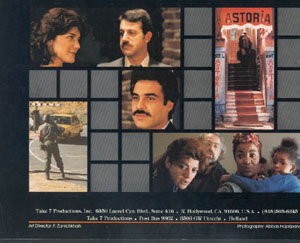
In her article about the presentation of space in Iranian movies, Mehrnaz Saeed Vafa maintains “In the works of the major Iranian exile filmmakers, home is always somewhere else, outside the worlds of their characters” (Saeed Vafa 200). In Allamezadeh’s feature home seems to be non-existent. There is no image of home all through the movie and amongst all the characters it is only Taghi and Mahin who are longing for return to Iran –because their children are incarcerated there. The idea of loss of home –or Avaregi (Farsi equalivalent for “vagrancy”)– is presented in the scene of the drinking party in the lobby. As one of the guests brings a tape player that plays Iranian music, the camera starts to dolly around in an uncanny fashion and takes all the characters one by one in the frame, as though somebody has decided to record their gathering in the fashion of a home movie. It is hard to define whose point of view is represented in this scene, but it feels like the camera movement tries to mimic the flow of the music. It would be safe to claim that in this position of home-in-ruins, music as the guests’ ethnic legacy uses a spatial proportion to unite them and create a substitute space. Nevertheless it makes them also aware of the limits of the space –as the camera simply moves around the small lobby– and ultimately creates an unsettling effect that we see in the reaction of one of the guests who says that he cannot stand being indoors. This special scene defines vagrancy, nostalgia and claustrophobia as interdependent terms.
Allamezadeh’s rendition of space diametrically opposes the approach of other contemporary Iranian filmmakers. Iranian movies after the revolution –especially those screened in festival circuits– are replete with exterior scenes. So here, unlike A Few Simple Sentences, the accent is created through the status of being an outsider, and not by borrowing the stylistic elements from the director’s national cinema. In doing so the film also strays from the “cultural notion of privacy” that Saeed Vafa relates to the dominance of exterior scenes. As she put it, these movies “shy away from exposing personal and private spaces” (Saeed Vafa 204). In contrast –and probably in defiance– Allamezadeh’s camera even sneaks into the bathroom to frame Poori’s nude figure under the shower, although the presentation of these private moments are comparatively tame. Given the fact that many of the Iranian films are also made on shoestring budgets, it is interesting to observe how the financial limitations can direct the directors to two opposite routes in depicting space. According to Saeed Vafa: “The majority of Iranian films are shot on location with minimal intervention and alteration by the filmmaker. This is mainly due to limited budget, which forces the filmmaker to work with small film crews and the minimum of equipment…” (202). In case of The Guests of Hotel Astoria, the limitations drove the director to shooting mainly on sets and then blend these shots with the few external shots from the United States and the Netherlands –the scenes of the Dutch embassy in Turkey was shot in the Netherlands– and the scenes clandestinely taken in Turkey.
Regarding its mode of production, The Guests of Hotel Astoria again demonstrates the concept of authorship in exile cinema, as the director took up the role of editor as well. All the same, it also proves that this versatility is not necessarily an aesthetic choice. In the case of this movie, the director admits that he had no other option because by the end of the shooting he was left with no money, so against his personal wish he had to edit the movie himself.
Notwithstanding its conventional connotation, exile can also carry the opposite meaning and “be defined by its utopian and euphoric possibilities” (Naficy, 5). This elaboration on exile is cited from the book on Iranian TV channels in the United States, where this different reading of exile can be sensed more strongly. Likewise in Allamezadeh’s movie, the United States seems to embody this euphoric image. Karimnia’s joy of travelling to the States as well as the wistful curiosity of the young couple in the last scene, both delegate such a fanciful image. But this utopian image is subverted by the succeeding flashback image of Poori’s ill-fated delivery. As the closing scene of the movie, it serves to remind us of the price of reaching this utopia. In light of this scene, the advocate’s lines that describe the States as the land of opportunity assumes an ironic edge. However, the bright side of living in exile is not totally rejected in this movie. Mr. Tabatabi represents a successful case of integration; he has an American wife and leads a stable life, though it is arguable which of the two terms of “exilic” and “diasporic” better suits him. In Poori’s case this integration does not take place. She continues to retreat into the closed spaces and maintains her solitude. The image that shows her writing something without drinking the milk her landlady brings for her completes the typical image of the isolated Iranian exile. Apparently she is not a writer, and for communicating with her husband relies on phone calls. This image is more evocative of exile Iranian writers, as some of them went through this self-destructive process because they could hardly bear the status of vagrancy. In describing this phenomenon Naficy writes: “Many exile writers […] use this cluster of painful emotions in their writings, and a few in their muted style of dying” (Naficy, The Making of Exile Cultures 15). Comparing the destinies of Mr. Tabatabi and Poori –which corresponds to two connotations and experiences of the exile– not only brings forth the temporally different waves of mobility, but also raises the notion of gender.
The process of the journey to the west seems to play a crucial role in altering the role of women who come from traditional societies. It enables them to break free from limits imposed on them by the patriarchal values and essentially destabilizes the structure of a patriarchal family (Naficy, The Making of Exile Cultures 46). Nonetheless the women in The Guests of Hotel Astoria seem to be only half-way freed, which mirrors their liminal status. The film showcases two instances of these struggles, both meeting with failure. In Poori’s case, she looks to be somehow dissatisfied with her matrimonial life and her decision to make love with Mohseni is partly triggered by her own desire –although her attraction to him is not portrayed in a convincing way. Her venture of independence commences from the point when she volunteers to accompany Davood Khan to take the passports for stamping. Her decision comes with lustful connotations: she takes on this duty to show her gratitude to Mohseni, as implied by her glance at him. Poori’s ineffectual relation with her husband can be traced in the scene when she starts to undress and then notices her husband has already gone to sleep. Her consequent glance at the mirror implies her desire to explore her femininity. But this foray takes its toll on her life, which presents itself in another scene in front of the mirror, where she anxiously caresses her now protruded belly and ponders over the real father of her child. In the course of the story, Poori seemingly attains a level of independence by travelling alone –although she is still financially dependent on her husband– nevertheless this independence culminates in her demise. The parallel narrative of Mr. Ziaee’s daughter represents another failed attempt of liberation. She is obviously led by her girlish curiosity to escape the grips of the patriarchal order in the family, but her defiance leads to her downfall, for she ends up being an easy target for the leering eyes of the surrounding men and descends into the situation of a fallen woman.
In comparison to A Few Simple Sentences, Allamezadeh’s feature film offers more issues to reflect on, including different journeys and trajectories of the characters. As the opening image suggests, The Guests of Hotel Astoria is basically a film about mobility. In the majority of external scenes we see our protagonists boarding bus, boat, taxi or airplane, or at places that modulate the human flow like airports and embassies. The narrative of the film hinges around different journeys, which based on their direction fall in two main categories: the journey to the west and the reverse journey. The latter is the most frightful one, whether it takes place from the Netherlands to Turkey –like the deportation of Karimnia and Poori– or from Turkey to Iran. The reverse –forced– journey of Mohseni to Iran costs him his life. Home is presented to Poori as a place of cruelty and absurdity. (This second feature is implied by Karimnia whose innocuous character renders his getting purged from the educational system meaningless.) The only people who take this reverse journey somehow willfully and without the intervention of the police are Mahin and Taghi, but they are portrayed differently from the others. They are the only ones shown to exhibit a fetishistic (in the form of religion) relationship with their homeland (the picture of Ali, the first Imam of Shias can be glimpsed in their room when they are packing for the return trip, and Mahin is the only woman that wears a scarf). The journey to the west can also prove deadly, as in Poori’s case. In relation to two different directions, Istanbul is presented as a crossing and a liminal space, but not a place to stay. Those outsiders who decide to stay either turn into a prostitute, like Parvin, or a pimp, like Dr. Partov, or like Davood Khan assume the role of a smuggler who moves people back and forth across the border. In relation to these trajectories, the hotel serves as transitory space, but gradually changes into the second place that protagonist need to evade, irrespective of their final destination. As a narrative of journeys, the film habitually stresses the importance of the passport but also shows how they can alternatively cause problems for their holders (as Poori and Karimina face trouble because of their association with Cuba). The only person who crosses the borders out of his free will is Davood Khan. He exemplifies the figure of shifter who “occupy a powerful position in the political economy of both actual and diegetic border crossing” (Naficy, An Accented Cinema 32). Despite the news of his arrest, he seems to have little difficulty in releasing himself from prison and resuming his business. I should add here that both examined films are more informed with a desire for finding home and go against “the potent return narrative” that Naficy describes as a feature of films by exile directors (An Accented Cinema, 12).
Learning of a filmmaker’s political background, one might be inclined to investigate the political elements in his films. As I already mentioned, A Few Simple Sentences is almost a depoliticized film, even though it draws our attention to the anti-immigration rhetoric verbally expressed by one of the travelers. The diegesis of The Guests of Hotel Astoria offers more in the way of hinting to the political affairs of its era, precisely with regards to what was happening in the director’s country of origin. However by taking the director’s account as to how the film was conceived into consideration, the political facet of the story qualifies as an added element. It seems that the director injected the story of leftist political activist Mohseni into the plot to give us a sense of the predicaments and the terrors he and his comrades suffered from. The story of Poori and Karimnia’s deportation from the Netherlands –because of their Cuban connection– is also a throwback to the days of paranoid sentiments towards anyone with a strong affinity to leftist ideologies. The prevailing hostility about leftists could bring serious ramifications for even politically innocent people, as the film shows, which in turn stresses the magnitude of menaces that real leftists had to face. It is interesting to note that Mohseni, as the main leftist introduced to the audience, is presented as a potent person (compared to Karimina’s ostensible sterility) that defies Naficy’s description of the paralyzed leftists (Naficy, The Making of Exile Cultures, 12). Strangely though, he is not a very sympathetic character, as we might have anticipated. After all he puts Poori in trouble, both for suggesting the help of Ali the Turk to obtain a Cuban visa, and for his intimate relations with her that make her situation at the police station all the more complicated. Altogether the political hints mostly remain at the surface and differ from the process of reflecting on the past, as Naficy speaks about. Here they function as autobiographical touches and in one instance is informed by a desire to exact revenge. [7]

The Guests of Hotel Astoria
In brief, Allamezadeh’s movies offer valid case studies for examining the career of an exilic director. Their production procedure is representative of the limitations of the opportunities and compromises offered by this mode of filmmaking –the external factors that affect the style of the film. The two films analyzed manifest their creator’s pronounced personal and autobiographical touch and so once more underscore the proximity of exilic filmmakers to the sphere of auteurism. Watching these movies can also prompt us to speculate further about how an exilic director illustrates time and space and how he/she deals with issues such as femininity and the crisis of identity. They also testify to the strong affinities among the films made by exilic directors at stylistic and thematic levels. Considering these facts necessitates studying lesser-known exilic directors in order to enrich the ever-growing cluster of material on cinema of migration.
The Guests of Hotel Astoria (1988) can be viewed online here.
Click here bio for a on Reza Allamehzadeh
Endnotes
1 Naficy divides the accented filmmaking into three modes, however the third category, the ethnic filmmaking, is markedly distinct from the two others in that its practitioners exhibit closer bonds with their host countries.
2 During his filmmaking activity under the Shaah’ regime, Allamezadeh had managed to shoot two features as well as two short films for children. To our dismay, none of these film are accessible at the present time.
3 In citing from the director, I refer to my phone interview with him conducted in November 2010.
4 In fact for making this film, Allamezadeh founded his company Take 7 with the financial support of his ex-assistant, a company under the title of which he has continued his activities up to this day.
5 The films Naderi made in the States following his relocation –he had already made a film in the US, in the middle of the Iranian period of his filmmaking, entitled Made in Iran (Amir Naderi, 1978)– have not taken Iranian characters as their central figure, neither have they addressed the issues specific to the Iranian Diaspora.
6 The hotel receptionist is an exception, however he is treated as an assimilated character and even tries to learn Farsi by playing backgammon with them. In fact his role is played by an Iranian actor.
7 Despite some rumours about the presence of the informers in Turkey working for the Iranian government, Dr. Partov’s character as a double agent was not modeled after any of them. According to the director, this character was based on a guy with a similar “shameless behaviour” –I borrow the director’s own description– whom he met on the set of his film, Ghadir (Reza Allamezadeh, 1972), shot in the southern part of Iran. Putting a political garb on such on undesirable character then serves as a vehicle to deploy personal anger.
Bibliography
Codelli, Lorenzo. “Mehmanan-e Hotel Astoria.” Positif. 345 (1989): 57.
Grassilli, Mariagiulia. “Migrant Cinema: Transnational and Guerrilla Practices of Film Production and Representation.” Journal of Ethnic and Migration Studies. 34.8 (2008): 1237-1255.
Laver, Ross. “Refugees From Iran.” Maclean’s. 100.6. (1987). 29-30.
Martineau, Richard. “The Guests of Hotel Astoria.” Sequences. 143 (1989): 38-39.
Mehrabi, Masoud. History of Iranian Cinema, From the Beginning till 1978. Tehran: Film Magazine Publications, 1986.
Naficy, Hamid. An Accented Cinema. New Jersey: Princeton University Press, 2001.
—-. The Making of Exile Cultures. Minneapolis: University of Minnesota Press, 1993.
—-. “Phobic Spaces and Liminal Panics: Independent Transnational Film Genre.” Home, Exile, Homeland: Film, Media and the Politics of the Place. Ed. Hamid Naficy. New York: Routledge, 1999.
Sadr, Hamid Reza. “Children in Contemporary Iranian Cinema: When We Were Children.” The New Iranian Cinema: Politics, Representation and Identity. Ed. Richard Tapper. London: I.B.Tauris, 2006.
Saeed Vafa, Mehrnaz. “Location (Physical Space) and Cultural Identity in Iranian Films.” The New Iranian Cinema: Politics, Representation and Identity. Ed. Richard Tapper. London: I.B.Tauris, 2006.
Sobchack, Vivian. “Is Anybody Home?”Home, Exile, Homeland: Film, Media and the Politics of the Place. Ed. Hamid Naficy. New York: Routledge, 1999.
Waller, Gerry. “The Guests of Hotel Astoria.” Variety. 335.10 (1989): 27-28.



